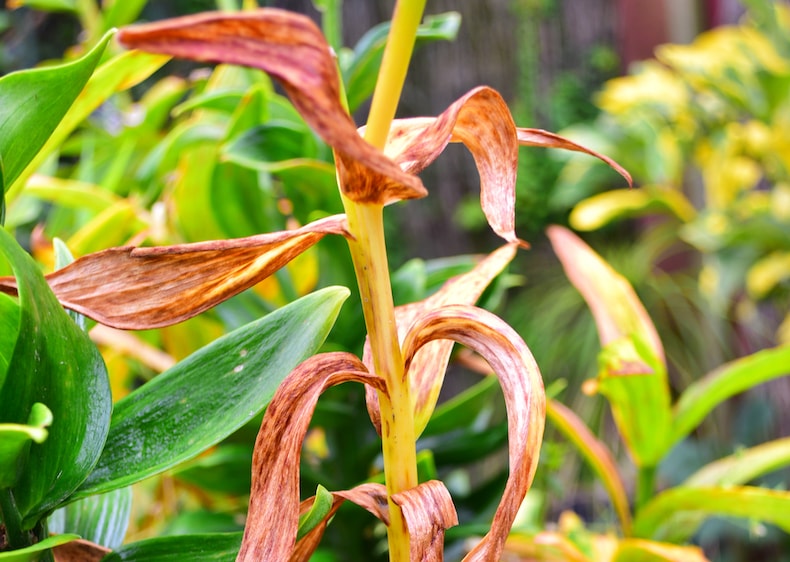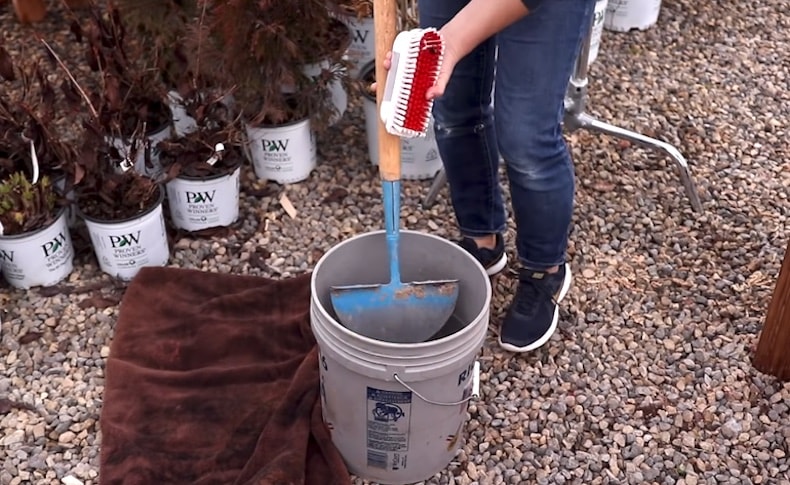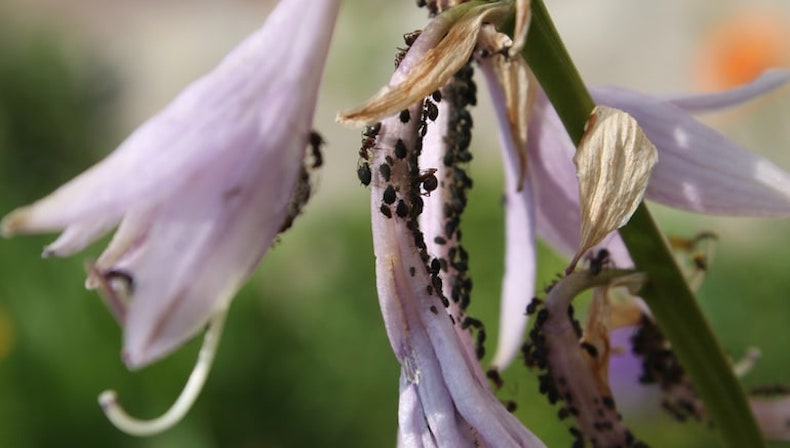Garden diseases - Lily diseases

Lilies can fall victim to a trio of fungal and viral infections
Image: Natalia Marshall/Shutterstock
If your lilies look worse for wear, there’s a good chance they’ve fallen victim to one of a trio of fungal and viral infections which attack both leaves and bulbs. Look out for brown spots or yellowing and streaking of the leaves, rotting bulbs and shrivelled blooms and act quickly to prevent the spread of disease. Here’s how to recognise and treat lily diseases.
What causes lily disease?
Sickly lilies are probably suffering from one of three problems:
- Botrytis elliptica – leaves disfigured by brown elliptical spots surrounded by dark rings.
- Fusarium oxysporum/Rhizoctonia solani – yellowing of the leaves and rot which attacks the basal plate – the hard disk at the bottom of the bulb from which the roots sprout.
- Tulip breaking virus – yellow-streaked leaves, and leaf and flower distortions. Fewer flowers than normal.
How to treat lily disease

Disinfecting tools in a bleach solution helps guard against re-infection
Image: Garden Answer
Keep a close eye on your lilies, checking regularly for signs of infection. If you spot a problem, act quickly to prevent it spreading. Here’s what to do with diseased lilies:
- Remove all affected material and burn it or put it out with the household waste. In the case of basal rot, dig up the whole plant and dispose of it, again preferably by burning. Never compost diseased plants because the fungal spores will survive to reinfect your next bed of lilies.
- Disinfect your tools using a strong bleach solution – fungi and viruses are easily spread via contaminated tools, containers, and even your wellies.
- If you’ve had a lily infection, do not plant lilies in the same spot again – in the case of Fusarium oxysporum /Rhizoctonia solani, which rot the bulb, leave it at least five years before you plant the same bed with lilies.
How to prevent lily disease

Aphids on your lilies can spread infections and diseases
Image: Kazakov Maksim/Shutterstock
Providing your lilies with the ideal growing environment encourages strong, vigorous plants which have better resistance to disease.
- Plant your lilies in the right place – oriental lilies like a sheltered spot with their heads in the sun, their roots in the shade. Other lilies prefer sunnier or shadier positions – check the growing instructions before positioning your plants.
- Soil conditions – lilies need acid soils with a pH of between 5.5 and 6.5 to thrive, and orientals also like soils rich in organic matter so be sure to build some into your beds before planting your bulbs. Avoid adding too much nitrogen-based fertiliser as these encourage the lush leaf growth that fungi love to feed on.
- Watering – Fungi love wet conditions – avoid letting the soil get waterlogged – lilies like well-drained soil.
- Keep pests under control – Tulip breaking virus is often spread via aphid carriers which infect your lilies while grazing on them.
- Avoid planting lilies and tulips together because diseases like tulip breaking virus are common to both.
Lily disease is a common problem in the garden, but if you’re careful to buy good quality, strong lily bulbs from reputable nurseries, and remain vigilant during the growing season, swift action should prevent a major outbreak.
Other pages you might like
See all pests & diseases guides
Individual guides
Diseases
- Apple scab
- Bacterial canker
- Blackleg
- Blossom wilt
- Botrytis
- Brown rot
- Clematis wilt
- Downy mildew
- Fungal disease
- Honey fungus
- Leaf scorch
- Leaf spot
- Leek rust
- Peach leaf curl
- Pear rust
- Phytophthora root rot
- Potato & tomato blight
- Powdery mildew
- Silver leaf fungus
- Tomato greenback
- Tomato leaf curl
- Tomato stem canker







